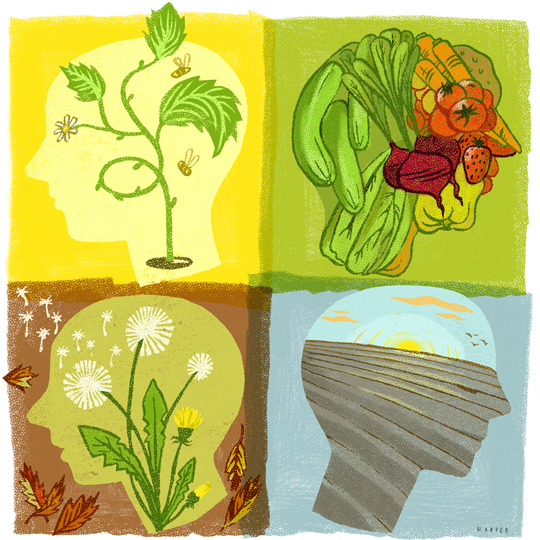 illustration by Kirsten HarperI often wonder whether farming is just a game of emotions. The pay is low, the hours are long, the work is physical and the weather pretty much controls the season’s outcome. Throughout the year, I ask myself, “Why am I doing this?” But every year I seem to find a renewed sense of hope, and the game continues.
illustration by Kirsten HarperI often wonder whether farming is just a game of emotions. The pay is low, the hours are long, the work is physical and the weather pretty much controls the season’s outcome. Throughout the year, I ask myself, “Why am I doing this?” But every year I seem to find a renewed sense of hope, and the game continues.
Despite the desolation outside, January is full of optimism. Final planning commences, seed catalogs arrive, conference season unfolds and there is much maintenance to do. A farmer in January is full of hope, with dreams of the perfect season ahead.
February’s short days and cold temperatures temper that wishful thinking. There might be a tree or two to fell and turn into next year’s logs, but the really physical work—the kind that distracts, disappears. Restlessness is overtaken by the anticipation to put seed to soil. Thankfully, by February’s end, seeds are indeed growing in warm greenhouses.
March begins its slow turn, then quickens a bit, and I feel fear. Daily inspections of germination rates lead to a sometimes overwhelming angst that those precious seeds will not grow, that I’ve messed up. Too deep. Too shallow. Too wet. Too dry. Too cold. Too warm. March’s gift of time works against you.
As April dawns, the fear subsides. The haze of green on the greenhouse tables spurs excitement. Early planting in the field is already underway. Onions, potatoes and early greens impart the exhilaration of spring. April’s controlled routine of bed preparation, tray seeding, field transplanting and early market sales spirals into May’s overwhelming growth.
What was once January’s crisp paper plan is now a dirty, worn, folded reminder of what isn’t getting done. Time and the To Do List are at odds in May and June. Work harder, work faster. If it doesn’t get planted now, it can’t be sold later. The pressure is nearly overwhelming. Sales at the markets are already cresting. A combination of giddiness and confidence, the result of praise from market shoppers and CSA customers, keep me going. As day-length nears its peak and the warmth of the sun is at its most pleasant, intense focus keeps me from exhaustion.
July brings heat waves and weariness. Weed, cultivate, harvest, sell and sweat. Both harvests and the heart become heavy. The lightness of spring greens shifts to the weighty work of tomatoes, cucumbers, zucchini and potatoes.
August’s humidity follows. The dry soil makes for hard cultivation, and bugs are relentless. Skeptical thoughts about why we farm swirl. Should this year be our last? I tell myself, “Just get the fall crops through the dry heat; just get through until fall. “
A Pennsylvania September day—clear skies, low humidity and 70 degrees—helps me catch a second wind. There is still hope. It’s the last chance to plant for the Thanksgiving and winter holidays. My spirits are lifted, and I let myself relax into the loosened pace and pleasant weather. I look forward to the weeks around the holidays where there’s an excuse to take a day or two off.
Frost marks the pleasant relief of another season truly coming to an end. November is a time to clean. Fields are put to bed. Tractors till, and cover crops are planted. The increasing orderliness of fall cleanup helps spark the realization that, yes, I can do this next season. The list making begins. The family gets closer and the holidays nourish us. Warmed by the wood cut last February, December melds into January and hope burns bright again.
Daniel Heckler and his wife, Deb, own and operate Jack’s Farm, a 10-acre USDA certified organic vegetable farm in Pottstown, Pa. You can listen to Dan’s interviews of food industry folks on his podcast Jack’s Farm Radio. For more information, visit jackasfarm.net and jacksfarmradio.com.







